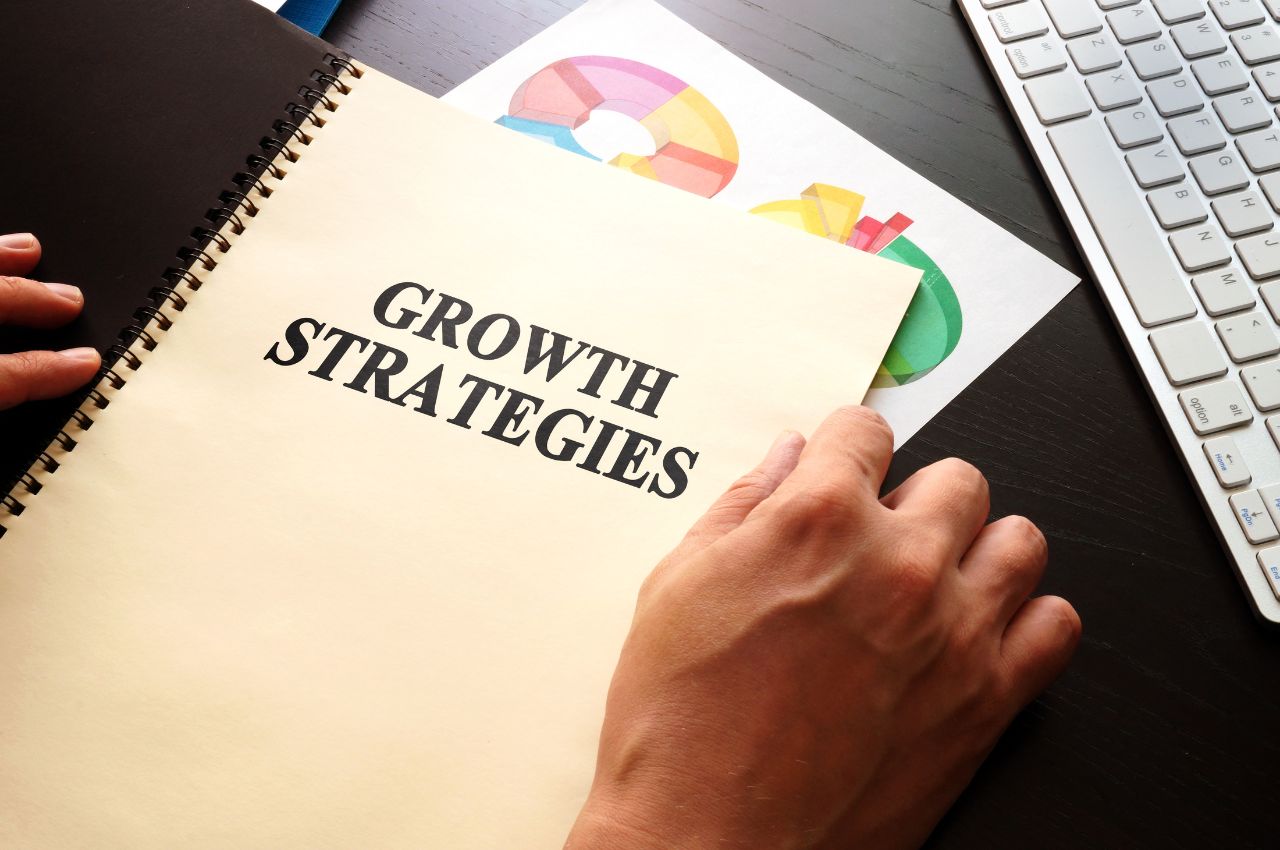Developing a profitable business is not an easy feat, and businesses of all sizes encounter numerous challenges. To expand a business, a business owner has to wear many hats and analyze many factors. However, if you are serious about expanding your business, you need an effective growth strategy. A growth strategy can allow your business to expand, which may lead to customer loss. You need willpower, ethical business conduct, and robust business growth plans to expand your enterprise. Remember that a successful growth strategy involves more than just thinking about the future. Determine quantifiable steps for your improvement and adhere to them.
Discover key considerations for developing a successful growth strategy by reading on.
What is a successful growth strategy?
A growth strategy refers to a comprehensive plan which assists in expanding business. However, expansion may be to some extent or overall business. A well-defined strategy helps boost sales and revenue in a specific period. An Effective growth strategy is measurable, goal-oriented, and focuses on constant improvement.
Finding and leveraging market openings is a common starting point for growth strategy. They go beyond your company and marketing plans, which outline how you will accomplish specific objectives. Growth strategies are essential because they maintain your company’s focus on goals beyond what it now competes in the market. They inspire you to think strategically and keep managers and employees inspired and on the same page. They occasionally need to make better decisions because they focus on the present rather than the future.
Factors to Consider Before Outlining Your Business Growth Strategy
#1: Establish Your Value Proposition
Understanding your business’s competitive advantage will help you sustain long-term growth. Analyze why customers purchase your products or services. Describe your relevance, differentiation, and credibility. Your answer can convince other consumers to do business with you.
For instance, Whole Foods Market is the definitive organic, healthy food source. Other companies, like Walmart, compete on price. Consider what you can provide as a unique benefit, and forget everything else. A deviation from this proposition will only lead to the devaluation of your business.
#2: Identify Area of Growth
Identifying your growth area is the second most crucial step in your overall growth strategy. Your business growth strategy should focus on specific areas you want to expand. Common focuses of strategic growth initiatives might include:
- Increase in the number of employees
- Addition of new locations or branches of your firm
- Expansion of your current office or warehouse space
- Including new goods and services
- Expansion into new geographic areas, cities, or nations
- Developing new stores
- Increasing sales and profits
You may consider more than one of the initiatives above in your growth plan, which makes sense.
#3: Set Long-Term Goals
Growing your business is like planning a vacation. Knowing your final destination makes the overall process smooth and more manageable. What if you could predict how much revenue your new business would make in the long term before you started? Wouldn’t that help you develop an effective growth strategy?
While planning your growth strategy, starting at the end and working backward is more helpful than the opposite. For this, you need to map out your long-term goals. To do this, ask yourself the following questions:
- Where do you see your firm and yourself in the future?
- What is a reasonable pace of corporate expansion?
- What kind of revenue do you anticipate your business bringing in?
- How many staff members do you anticipate having?
When you work backward, it’s easier to set realistic goals and objectives for where the company needs to be in five years, three years, and one year to achieve that ten-year goal. Start with a hypothetical five-year goal, then map out four, three, two, and one-year goals.
#4: Determine Your Key-Performance Indicators
Establishing your high-level goals is the first step toward determining your key performance indicators (KPIs). Whenever you set a goal, you need to identify key metrics and results that will help gauge your progress.
After you’ve chosen your metric, you need to assess how you’re doing against it. Consider starting a new streaming service like Netflix. Choose “total watch time” as your primary metric. Your analysis would indicate that a higher watch time corresponds with higher retention (and, therefore, higher revenue).
Assume your users watch 30 minutes of shows on your service daily, which is your current performance of your base metric. It’s your baseline. One of the high-level goals you’ve set is to increase retention by 30% in the next 12 months. You will have to focus on total watch time per user to hit this goal.
#5: Conduct Growth Experiments
Creating valuable experiments is more challenging than it seems. When companies implement new product features or marketing ideas, waterfalling is a common mistake. Waterfalling occurs when a team continually adds requirements to a project, increasing the implementation time.
Consequently, what was supposed to be implemented in a few weeks now takes months. To avoid this, you should operate on a one- or two-week sprint cycle. You can achieve this by breaking down big projects into minimum viable tests. Using MVTs, you can gain valuable insights faster and validate whether a large-scale project is worthwhile.

#6: Check Validation of Your Growth Experiments
There may need to be more than an MVT to validate whether you need to incorporate an experiment into your growth strategy. Your next step is to determine if this experiment will benefit your customers. Providing a great customer experience is also part of your marketing job responsibilities.
You can do the same thing by creating a Google Doc or Trello card outlining your experiments. Airtable and Google Docs are HubSpot’s tools of choice for growth experimentation. As you become more adept at the process, try other tools to see what works best.
#7: Practice Rigorous Accountability
One of the most important steps to driving growth is fostering extreme team accountability. Every team member should know how their work contributes to the company’s high-level goals. Team members must know how their work relates to the company’s high-level goals.
Include each employee’s feedback in all marketing meetings. This would help you get valuable insights and enhance employee satisfaction. Moreover, when employees are more productive, you include them in the growth strategy.
Wrap Up
To conclude, there is no magic formula to grow your business overnight. Instead, it takes a lot of consistent effort, identifying and prioritizing the right metrics, and experimenting with diverse marketing strategies. Therefore, a well-planned successful growth strategy is crucial to achieving your target objectives. [1] Well, we can help you a lot if you consider us as your best digital marketing agency in Vancouver. So, Contact us now!





